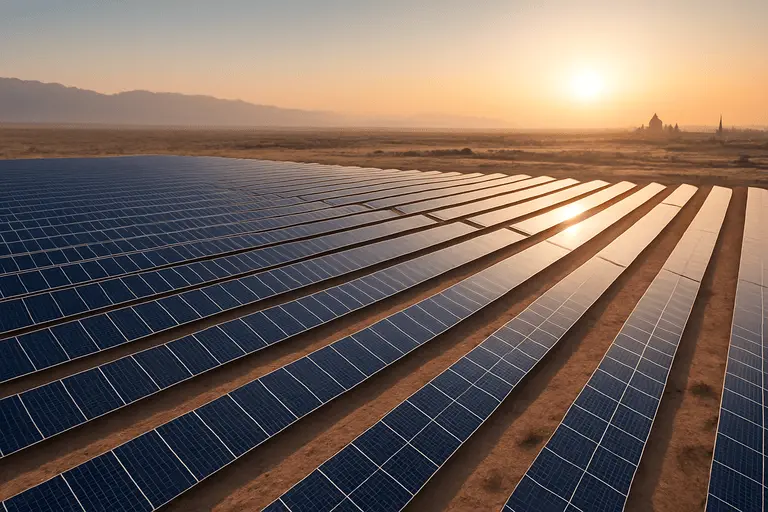
3.85 million solar panels – that’s how many were imported into Uzbekistan in 10 months of 2023. This staggering figure represents a 21-fold increase compared to the previous year, underscoring the rapid and ambitious growth of solar energy in the country. Uzbekistan is making significant strides in its transition to renewable energy, driven by a clear vision for a sustainable future and supported by robust government initiatives. This article will delve into the latest statistics on solar energy development in Uzbekistan, reviewing the key achievements of 2024 and outlining the ambitious plans set for 2025 and beyond. We will explore import dynamics, regional development, industrial projects, economic indicators, and future forecasts, providing a comprehensive overview of the nation’s progress in harnessing solar power.
SECTION 1: IMPORT DYNAMICS
1.1 Quantitative Indicators
The import of solar panels into Uzbekistan has witnessed an exponential surge, reflecting the country's aggressive push towards renewable energy. In 2022, the total import stood at 183 thousand panels. This figure skyrocketed to an impressive 3.85 million panels in 2023, marking an astounding 2,000% increase within a single year. The total cost of these imports amounted to $427.1 thousand, indicating a significant investment in solar infrastructure. This dramatic rise in imports highlights the growing demand for solar energy solutions across various sectors in Uzbekistan.
1.2 Geography of Supplies
The global supply chain for solar panels is heavily concentrated, and Uzbekistan's import statistics mirror this trend. China remains the dominant supplier, accounting for an overwhelming 3.79 million units, or 98.3% of all imported solar panels. This reliance on Chinese manufacturers is largely due to their competitive pricing, advanced manufacturing capabilities, and vast production volumes. Other notable suppliers include Hong Kong (15.5 thousand units), UAE (15.1 thousand units), Turkey (7.5 thousand units), and South Korea (6.8 thousand units). While these countries contribute a smaller share, they represent a diversification of supply sources.
1.3 Average Cost
Analyzing the average cost per panel provides insights into market trends and the economic viability of solar installations. The average price per panel can be calculated by dividing the total cost of imports by the number of units. This figure has shown dynamic changes over the years, influenced by global market prices for solar technology, manufacturing efficiencies, and the impact of exchange rates. A declining average cost per panel makes solar energy more accessible and attractive to a wider range of consumers and investors, further accelerating its adoption in Uzbekistan.
SECTION 2: REGIONAL DEVELOPMENT
2.1 Leading Regions
Solar energy adoption in Uzbekistan is not uniformly distributed across all regions, with certain areas demonstrating higher rates of installation. The Tashkent region leads the way, accounting for 35% of all solar installations, driven by its higher population density and economic activity. Samarkand and Bukhara regions follow with 18% and 15% of installations, respectively, while the Andijan region contributes 12%. The remaining 20% is distributed among other regions, indicating a broader, albeit less concentrated, adoption across the country. These regional disparities are influenced by various factors, which will be discussed further.
2.2 Plans by Regions for 2025
Uzbekistan has set ambitious regional targets for solar panel installations in 2025, aiming to further decentralize and expand renewable energy access. The Tashkent region is projected to add 20,000 new households with solar panels, while Samarkand and Bukhara aim for 15,000 and 12,000 new installations, respectively. Andijan plans for 10,000 new households, and the remaining 17,172 new installations are allocated to other regions. In total, 74,172 new solar installations are planned for 2025, demonstrating a concerted effort to boost solar energy capacity nationwide.
2.3 Factors of Regional Differences
Several factors contribute to the regional differences in solar energy development. The level of insolation (sunlight exposure) varies across regions, directly impacting the efficiency and output of solar panels. Regions with higher insolation naturally present more favorable conditions for solar energy. The purchasing power of the population also plays a significant role, as higher income levels can facilitate greater investment in solar systems. The existing development of power grids and infrastructure in each region influences the ease and cost of connecting new solar installations. Finally, local initiatives by akimats (local administrations) can significantly accelerate or hinder solar energy adoption through supportive policies, awareness campaigns, and incentive programs.
SECTION 3: INDUSTRIAL PROJECTS
3.1 Large Solar Power Plants
Beyond individual household installations, Uzbekistan is heavily investing in large-scale industrial solar power plants to significantly boost its renewable energy capacity. Notable projects include the Navoi HPP (Hydroelectric Power Plant) and Samarkand HPP, each contributing 100 MW to the national grid. These utility-scale projects are crucial for meeting the country's ambitious energy targets. Plans until 2025 include the addition of an impressive 4 GW of new solar capacity, signaling a massive expansion of the solar energy sector and a shift towards large-scale renewable energy generation.
3.2 Public-Private Partnership
Public-private partnerships (PPPs) are a cornerstone of Uzbekistan's strategy for developing its renewable energy sector. These collaborations involve international investors, bringing in crucial foreign direct investment, technological expertise, and best practices. The Asian Development Bank (ADB) plays a significant role in facilitating these projects, providing financial support and technical assistance. Lending under state guarantees further de-risks these investments for private entities, making Uzbekistan an attractive destination for renewable energy development.
3.3 Local Production
Uzbekistan is also fostering local production capabilities to reduce reliance on imports and create domestic value. Companies like Great Start Bild (A.R.T. SOLAR) are contributing significantly with a production capacity of 100 MW. Another emerging player is Enter Green Solar in Yangiyul. These local manufacturers are vital for building a sustainable solar energy ecosystem within the country, creating jobs, and developing local expertise. Plans for further development of local production aim to enhance self-sufficiency and innovation in the solar energy sector.
SECTION 4: ECONOMIC INDICATORS
4.1 Investments in the Sector
The solar energy sector in Uzbekistan has attracted substantial investments, reflecting its growing importance in the national economy. In 2024, the total volume of investments in the sector reached an impressive $2.68 billion. A significant portion of this, $2 billion (75%), came from own funds, indicating strong domestic commitment and financial capacity. The remaining $643 million (25%) was sourced from loan funds, highlighting the role of financial institutions in supporting renewable energy projects. These investments are crucial for funding the expansion of solar infrastructure and driving technological advancements.
4.2 Job Creation
The rapid growth of the solar energy sector has a direct positive impact on employment. It has already created over 5,000 direct jobs in areas such as manufacturing, installation, and maintenance of solar systems. Furthermore, related industries, including logistics, engineering, and support services, have seen the creation of over 15,000 indirect jobs. Looking ahead, plans for 2025 project the creation of an additional 3,000 new jobs, underscoring the sector's potential as a significant contributor to employment and economic development.
4.3 Contribution to GDP
The increasing share of renewable energy sources in Uzbekistan's energy balance is expected to have a notable impact on the country's GDP. The target of increasing the share of RES from 12% to 20% will lead to significant savings on energy carrier imports, reducing the country's reliance on fossil fuels and strengthening its energy independence. Moreover, the potential for exporting surplus renewable energy, particularly during peak production periods, could open new revenue streams and further contribute to economic growth. The development of the solar energy sector is thus a strategic move towards a more diversified and resilient economy.
SECTION 5: FORECASTS FOR 2025-2030
5.1 Quantitative Forecasts
The trajectory for solar energy development in Uzbekistan remains highly ambitious. For 2025, the plan is to install 74,172 new solar panels, building on the momentum of previous years. Looking further ahead, the period between 2026 and 2030 is projected to see an annual doubling of solar energy capacity, indicating an aggressive expansion strategy. The ultimate goal is to achieve a 40% share of renewable energy sources in the national energy balance by 2030, solidifying Uzbekistan's position as a leader in renewable energy in the region.
5.2 Technological Trends
Future growth in the solar energy sector will be significantly influenced by ongoing technological advancements. Continued improvements in panel efficiency will lead to higher energy yields from smaller footprints, making solar installations more viable in diverse locations. The reduction in the cost of energy storage solutions, such as batteries, will address the intermittency of solar power, enabling more reliable and consistent energy supply. Furthermore, the development of smart grid technologies will optimize the integration of renewable energy into the national grid, enhancing efficiency, stability, and overall energy management. These technological trends will be crucial enablers for Uzbekistan to achieve its long-term solar energy goals.
SOURCES:




